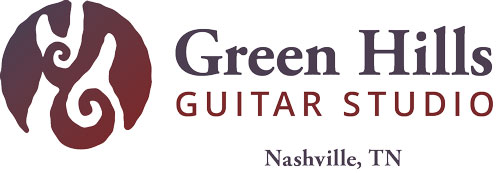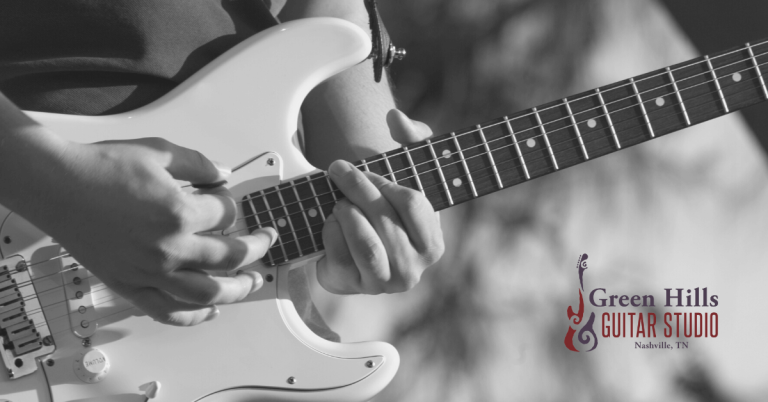10 Easy Guitar Songs from the 2000s
Picking up the guitar for the first time is always exciting, and learning to play songs you love makes the experience even better. The 2000s gave us plenty of iconic tracks across genres like rock, country, and pop, and many of them are perfect for beginner guitarists. These songs are fun to play, feature simple chord progressions, and help you build essential guitar skills.
In this article, we’ll explore 10 easy guitar songs from the 2000s that are beginner-friendly. Whether you’re starting out or just looking for some fresh tunes to practice, these tracks will keep you motivated while improving your strumming, chord transitions, and timing.
1. “Boulevard of Broken Dreams” by Green Day
Green Day’s “Boulevard of Broken Dreams” is an iconic track from the 2000s. It features a simple yet powerful chord progression. This song is perfect for beginners due to its steady strumming pattern and straightforward structure, allowing you to focus on building rhythm and smooth transitions.
Why “Boulevard of Broken Dreams” is a Good Addition to Your Repertoire:
- Easy Chord Progression: The chords are simple and repeat throughout the song, making it easy to learn.
- Consistent Strumming Pattern: The rhythm is steady and ideal for beginners looking to develop consistent strumming.
- Rock Anthem: It’s an iconic song that’s fun to play and recognizable to others.
Chords & Structure for “Boulevard of Broken Dreams”:
- Key: F Minor
- Chords: Em, G, D, A, C
- Song Structure: Verse – Chorus – Verse – Chorus – Bridge – Chorusg
2. “You Belong With Me” by Taylor Swift
Taylor Swift’s “You Belong With Me” is a fun, upbeat pop-country hit that’s easy to play and perfect for beginners. With a repetitive chord progression and catchy melody, it’s an ideal song to practice smooth chord transitions while keeping time with a steady strumming pattern.
Why “You Belong With Me” is a Good Addition to Your Repertoire:
- Simple Chords: The song features basic chords that are easy to memorize and play.
- Catchy Melody: It’s fun to play along with this popular hit, making practice sessions more enjoyable.
- Upbeat Rhythm: The steady tempo helps build strumming consistency and rhythm.
Chords & Structure for “You Belong With Me”:
- Key: G Major
- Chords: G, D, Em, C
- Song Structure: Verse – Chorus – Verse – Chorus – Bridge – Chorus
3. “In the End” by Linkin Park
“In the End” is one of Linkin Park’s signature songs and is an excellent choice for beginners looking to explore rock guitar. The chord progression is straightforward, and the moderate tempo allows new guitarists to focus on clean transitions between chords and rhythm practice.
Why “In the End” is a Good Addition to Your Repertoire:
- Simple Chord Progression: The chords are easy to play, making them accessible for beginners.
- Moderate Tempo: The song’s tempo allows for focused chord transitions without rushing.
- Rock Vibe: It’s a popular rock anthem that’s fun to play and introduces you to a more dynamic playing style.
Chords & Structure for “In the End”:
- Key: C Minor
- Chords: Em, C, G, D
- Song Structure: Verse – Chorus – Verse – Chorus – Bridge – Chorus
4. “The Scientist” by Coldplay
“The Scientist” is a soft, melodic song with a repetitive chord structure that’s perfect for beginners. The slow tempo allows you to practice clean chord changes and explore dynamics in your playing, making it a great introduction to more emotional and expressive guitar work.
Why “The Scientist” is a Good Addition to Your Repertoire:
- Slow Tempo: The song’s pace is great for practicing smooth chord transitions.
- Simple Chords: Its repetitive structure is easy to memorize and play.
- Emotional Expression: The song’s mellow vibe encourages beginners to focus on dynamics and expression in their playing.
Chords & Structure for “The Scientist”:
- Key: D Major
- Chords: D, A, G, Bm
- Song Structure: Verse – Chorus – Verse – Chorus – Bridge – Chorus
5. “I’m Yours” by Jason Mraz
“I’m Yours” is a feel-good acoustic track that’s perfect for beginners due to its simple chord progression and laid-back vibe. The song’s reggae-inspired rhythm offers a fun way to practice strumming and develop your sense of timing.
Why “I’m Yours” is a Good Addition to Your Repertoire:
- Relaxed Rhythm: The song’s chill vibe is great for practicing strumming consistency.
- Simple Chord Progression: The repetitive chords make it easy to follow and play along.
- Feel-Good Song: The lighthearted nature of the song makes practice sessions more enjoyable.
Chords & Structure for “I’m Yours”:
- Key: C Major
- Chords: C, G, Am, F
- Song Structure: Verse – Chorus – Verse – Chorus – Bridge – Chorus
6. “Before He Cheats” by Carrie Underwood
“Before He Cheats” is a country-rock anthem that’s great for beginners who want to explore a more aggressive strumming style. The song’s simple chord structure makes it easy to learn, while its upbeat tempo offers a fun challenge for those looking to build rhythm and timing.
Why “Before He Cheats” is a Good Addition to Your Repertoire:
- Simple Chords: The song’s basic chords are easy to pick up and memorize.
- Upbeat Tempo: The lively rhythm helps develop timing and strumming consistency.
- Country-Rock Vibe: This modern country hit is fun to play and great for learning a more energetic strumming style.
Chords & Structure for “Before He Cheats”:
- Key: G Minor
- Chords: G, C, D, Em
- Song Structure: Verse – Chorus – Verse – Chorus – Bridge – Chorus
7. “How to Save a Life” by The Fray
This emotional, piano-driven song translates beautifully to the guitar with its simple chord progression. “How to Save a Life” offers beginners a great way to practice smooth chord transitions and strumming while exploring more expressive playing techniques.
Why “How to Save a Life” is a Good Addition to Your Repertoire:
- Emotional Depth: The song’s emotional delivery encourages expressive playing.
- Simple Chord Progression: Its repetitive structure is easy to memorize and follow.
- Perfect for Beginners: The moderate tempo allows beginners to practice without feeling rushed.
Chords & Structure for “How to Save a Life”:
- Key: C Major
- Chords: C, G, Am, F
- Song Structure: Verse – Chorus – Verse – Chorus – Bridge – Chorus
8. “Use Somebody” by Kings of Leon
“Use Somebody” is a rock anthem with a straightforward chord progression and a driving rhythm that makes it perfect for beginner guitarists. The song’s repetitive structure is easy to follow, and its moderate tempo allows for a comfortable learning pace.
Why “Use Somebody” is a Good Addition to Your Repertoire:
- Simple Chords: The easy-to-play chords make it accessible for beginners.
- Moderate Tempo: The song’s steady pace helps you focus on clean chord transitions.
- Rock Anthem: It’s a popular rock song that’s fun to play and recognizable to others.
Chords & Structure for “Use Somebody”:
- Key: C Major
- Chords: C, G, Am, F
- Song Structure: Verse – Chorus – Verse – Chorus – Bridge – Chorus
9. “Seven Nation Army” by The White Stripes
“Seven Nation Army” is a simple yet iconic rock song with a memorable riff that beginners can quickly pick up. The song’s repetitive nature and easy power chords make it an ideal choice for those looking to practice rhythm and strumming techniques. Its unique ubiquity has given it the status of a modern folk song, where people who have no idea of its source are aware of the melody.
Why “Seven Nation Army” is a Good Addition to Your Repertoire:
- Iconic Riff: The recognizable riff is easy to play and great for beginners.
- Power Chords: The song uses simple power chords, which are perfect for beginners.
- Repetitive Structure: Its repetitive nature makes it easy to learn and fun to play.
Chords & Structure for “Seven Nation Army”:
- Key: E Minor
- Chords: Em, G, A
- Song Structure: Intro – Verse – Chorus – Verse – Chorus
10. “The Middle” by Jimmy Eat World
“The Middle” is an energetic pop-punk anthem that’s fun to play and easy to learn. Its simple power chords and driving rhythm make it perfect for beginners who want to practice strumming and rhythm techniques in a fast-paced, upbeat song.
Why “The Middle” is a Good Addition to Your Repertoire:
- Power Chords: The song’s simple power chords are easy for beginners to learn and play.
- Upbeat Rhythm: The fast tempo offers a fun challenge for practicing strumming and timing.
- Catchy and Fun: It’s a popular song that’s enjoyable to play and share with others.
Chords & Structure for “The Middle”:
- Key: D Major
- Chords: D, G, A
- Song Structure: Verse – Chorus – Verse – Chorus – Bridge – Chorus
Beginner Guitar Tips: A Step-by-Step Guide to Progress
- Master Basic Chords First: Start by learning a few foundational chords, such as G, C, D, and Em. These are essential building blocks for many songs. Focus on clean, precise fingering, ensuring each note rings out clearly.
- Develop Smooth Transitions: Once you’re comfortable with individual chords, practice transitioning between them. Start slow, concentrating on getting each transition smooth before increasing your speed. A great exercise is to pick two chords and go back and forth between them until it feels natural.
- Build Timing with a Metronome: To play in sync with others or to recorded tracks, developing a sense of timing is crucial. Use a metronome to practice playing at a consistent tempo. Start slow and gradually increase the speed as you improve.
- Break Songs into Sections: Instead of trying to tackle an entire song at once, break it into manageable sections (like verse, chorus, or bridge). Master one part before moving to the next, and then piece everything together once you feel confident with each section.
- Use a Capo to Simplify Chord Shapes: A capo is a helpful tool for playing songs in different keys without learning new chord shapes. It’s especially useful for beginners when dealing with more challenging songs or chords.
- Play Along with the Recording: Once you have the basic chords down, try playing along with the original song. This will help you develop a sense of timing and dynamics, and it’ll get you used to playing in a real-world context, mimicking the experience of playing with a band.
- Record Yourself for Feedback: Recording your practice sessions is one of the best ways to evaluate your progress. It allows you to hear areas where you’re improving and identify parts of your playing that may need more attention.
- Practice Patience and Consistency: Guitar playing is a journey, and consistent, focused practice leads to steady improvement. Don’t rush the process. Set small goals, practice daily, and recognize that progress will come naturally over time.
The Coda
The 2000s were a time of diverse music styles, with pop, rock, and country blending into chart-topping hits. Learning songs from this era offers beginners a great opportunity to develop skills while playing familiar and enjoyable tracks. The 10 songs listed here provide a perfect balance of simplicity and fun, giving you a variety of rhythms and techniques to work on.
Ready to further your guitar journey? At Green Hills Guitar Studio, we provide personalized guitar lessons that suit your skill level and musical preferences, whether you’re learning in-person in Nashville or online. Our experienced instructors are here to help you grow as a guitarist and make your practice sessions rewarding. Get in touch today!






